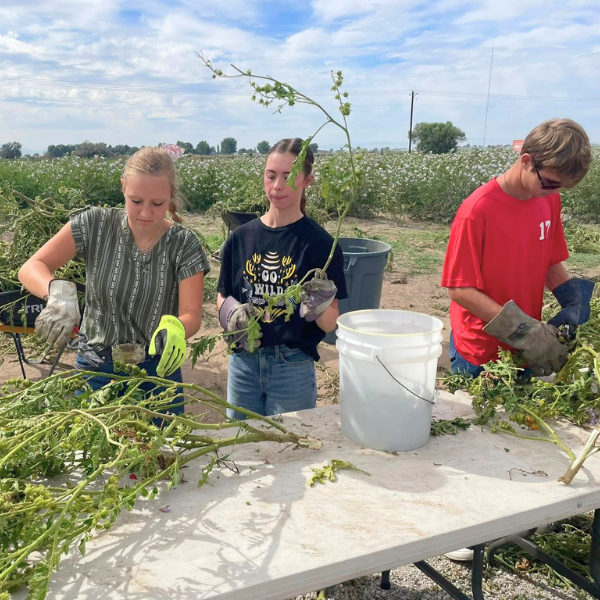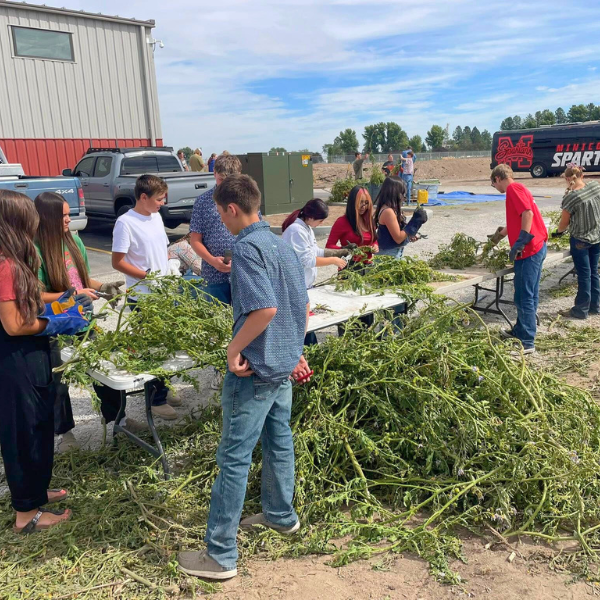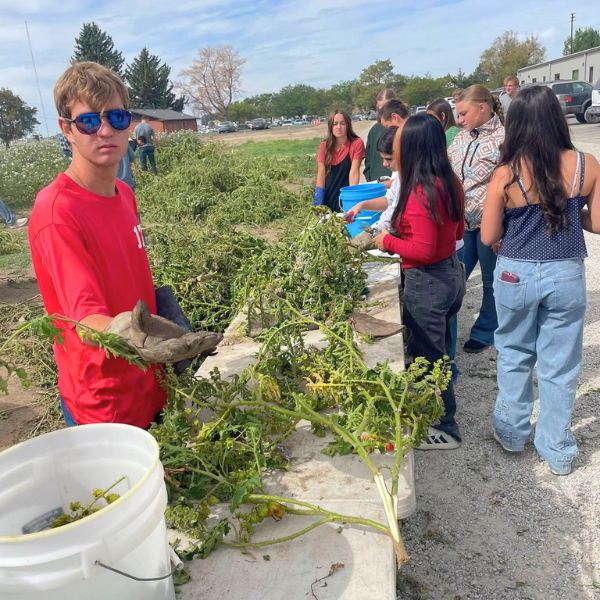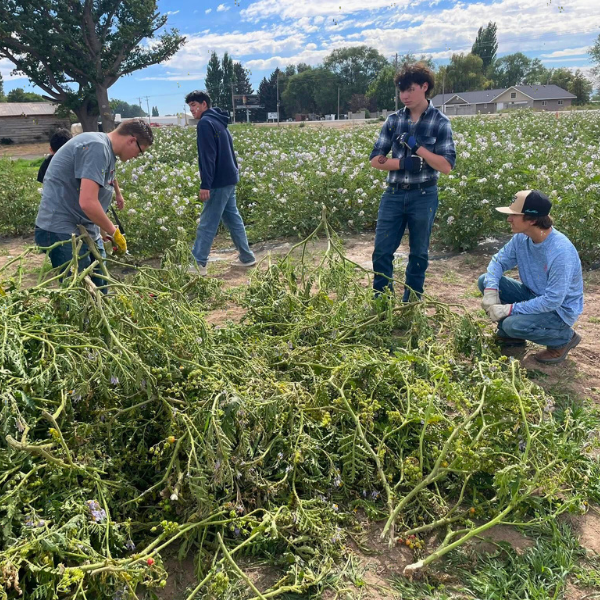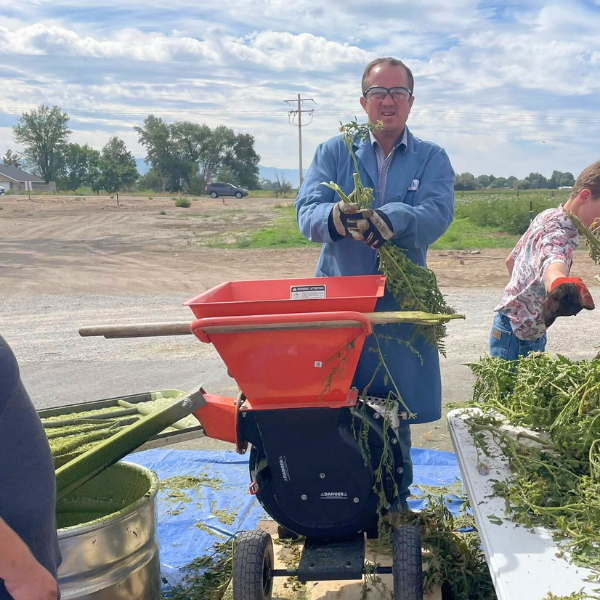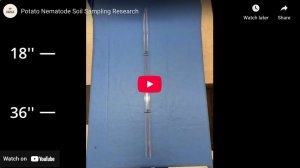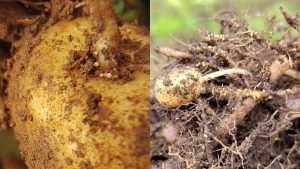Idaho High School Grows Litchi Tomato for Potato Nematode Research
Students at a high school in Rupert, Idaho have recently completed growing and harvesting a unique plant for potato nematode research: litchi tomato (Solanum sysimbrofolium).
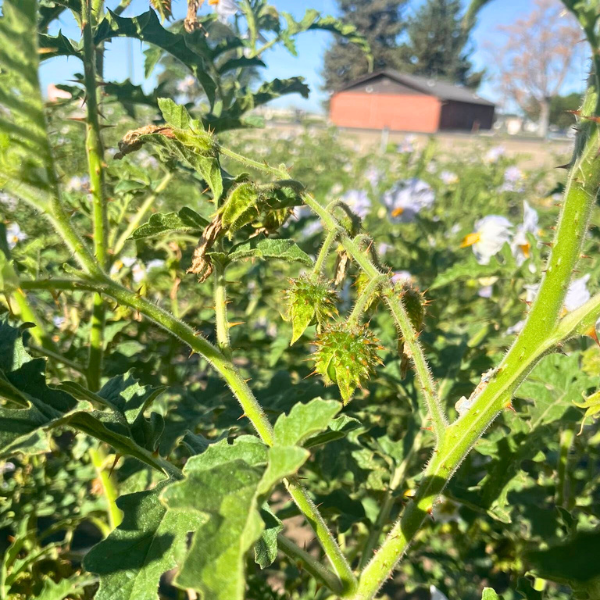
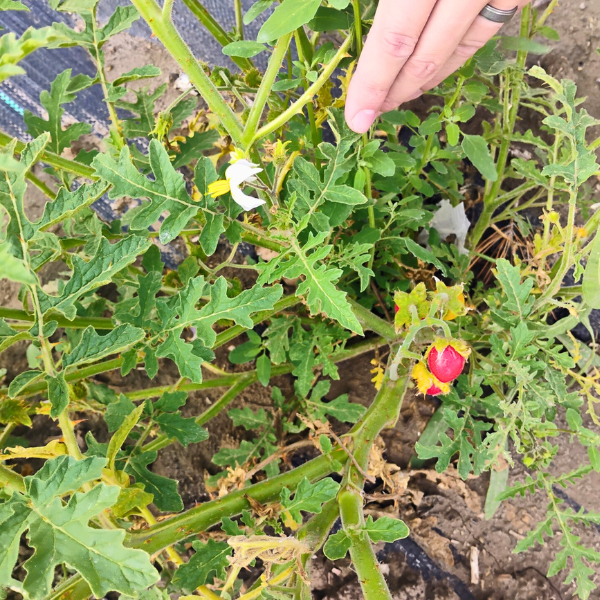
Litchi tomato is considered an invasive species in Idaho and requires a permit from the state department of agriculture for cultivation and movement. Welding teacher and FFA Advisor Rick Stimpson led the litchi tomato project as part of Minico High School’s ag program in collaboration with PAPAS researchers from the University of Idaho and the state’s department of agriculture.
“We grew the plants from seed in our greenhouse and ended up planting about 2,500 in a one-acre lot just outside our new ag building,” says Stimpson. “Our students put in the hard work through planting, watering and weeding this summer to harvesting after school started.”
Students from Minico High School students harvesting and sectioning litchi tomato plants
Litchi tomato contains a chemical that is highly toxic to potato nematodes, offering enormous potential for new control methods. As a trap crop, litchi tomato causes potato cyst nematodes to hatch without allowing reproduction—research shows a reduction in cyst production by 90% to 99%. The PAPAS team studies litchi tomato plant components for use in new nematicide chemistries and in nematode-resistant potato varieties.
After introducing the students to nematodes, we worked with them to create a protocol and experiments for their field of litchi tomato. The harvested and sectioned plant materials are now being stored in the school’s state-of-the-art freezer, packaged and ready for shipment to the University of Idaho for further research.


The students will eventually be traveling to U of I to see research in progress and run experiments on litchi tomato and pale cyst nematode (Globodera pallida).
“This has been an awesome experience for the students to get involved in real field work while learning about new areas of agriculture they’ve not seen before,” Stimpson adds. “They’ve learned a lot and are really excited to see how the research progresses.”
Stay tuned as this exciting opportunity for education, outreach, and research develops.
Learn more about our work with litchi tomato for potato nematode control:



